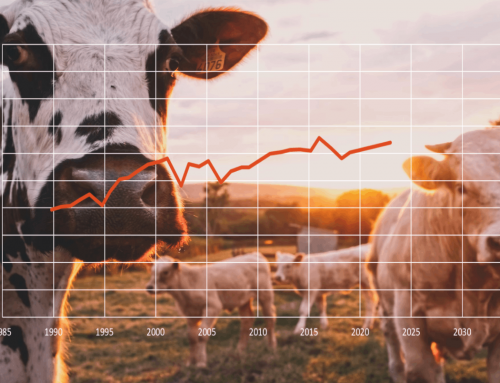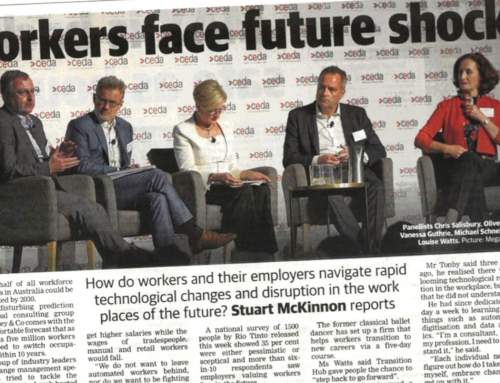The long trend of using pseudoscience and fearmongering to undermine disruptive newcomers, innovators and disruptors.
I wrote a shorter version of this piece for a publication early in 2020 and then, well 2020 happened and it didn’t see the light of day …. until the hype around the 2021 Super bowl reminded me it existed!
Every year, one Sunday, early in February, the eyes of the USA turn on to the Super Bowl. For decades now thanks to the money and magic of the ad industry, for a large portion of the American market and for billions of others around the world this day is more about the advertising positioned in the Super Bowl than it is about the game itself. Advertisers plan years in advance for their one shot at winning the day.
In recent times, thanks to the global appeal of the content, the proliferation of digital platforms and the permission assets the brands have built, the world watches these flagship ads before the Super Bowl, during the Super Bowl and again ad nauseam for the following week.
Advertising is often a mirror of activity in industry and society across the globe. In 2020 during the Super Bowl an ad ran that, when viewed through an objective lens, treated consumers like fools. The advertiser in question spent UD$5.6 million to peddle fear in the face of logic.
Worse still across the web, industry bodies, corporate brands and a range of others thought highly enough of the piece that they shared it on their social platforms and seemed to endorse the second grade thinking behind the campaign.
The ad was part of a campaign by “The Center for Consumer Freedom Team” and purported to show kids in a spelling bee confronted with spelling challenges consisting of the names of chemicals contained in “synthetic meat” alternatives. See for yourselves.
Founded in 1996, the Center for Consumer Freedom tells us it is “a non-profit organization devoted to promoting personal responsibility and protecting consumer choices”. Reading further on their website they take aim at “self-anointed ‘food police,’ health campaigners, trial lawyers, personal finance do-gooders, animal-rights misanthropes, and meddling bureaucrats” and looking back at their past efforts fearmongering and pseudoscience are their stock-in-trade.
Unfortunately, the ad and the sharing of the ad by other more reputable groups is not only an exercise in fearmongering and deception of the masses. It leverages emotion laden topics and the public’s lack of detailed knowledge (and willingness to remain uninformed) and exploits all of this while pandering to the market’s pre-existing misconceptions. The term “confirmation bias” springs to mind and does so vigorously.
As someone involved day to day in writing, speaking and consulting on the future of industries, society and the food sector, I’m a keen observer of the evolution and expansion of the field of alternate proteins so for obvious reasons the ad piqued my interest.
While the science on the health or safety of the cultured meats the ad casts a shadow on (or plant based meat substitutes for that matter) might still be in question, that’s not the purpose of the video or it’s narrative. The campaign doesn’t suggest vigorous exploration of the topic by the public or anyone else to determine the product’s safety. This content dumbs down the role of the consumer from thinker to mindless follower suggesting “if you can’t spell or pronounce it, maybe you shouldn’t be eating it”.
In a world where we use science and evidence to determine what is appropriate to eat, modern government policy and purchasing from powerful retailers has, thankfully, matured beyond decision by catchphrase. The case-by-case assessment of a product’s contents and the impact of its molecular make up on the consumer is the role of rigorous scientific product testing. Asserting we should rely on advertising tag lines built on the sort of logic normally reserved for old wives’ tales gives the purchasing public no credit. Beyond that, it sets out to dissuade them from thinking, reasoning and decision making.
The campaign seeks to plant a seed of doubt in the meat-consuming public’s minds. It asserts that the forthcoming wave of competitors to the global meat industry by default should NOT be trusted regardless of any science or safety information that may come to light now or in the future. This is done in the hope of triggering an emotional stance in the audience that “chemicals are bad”. Worse still the tag line, “if you can’t spell or pronounce it, maybe you shouldn’t be eating it”.
In a world where objective information and reasoning wins out, we’d see traditional food’s response to a threat or new competition less subjective and emotive. I’d like to think the traditional protein supplier market’s response looks more like the creation of value or alternative propositions for the consumer allowing the incumbent proteins to compete with the newcomers. Unfortunately, the approach taken seems to appeal to irrational and reactionary elements in the audience. Perhaps 4 years of emotion over thought in the US public debate has eroded the value of data and reason and the term ‘fake news’ now segues seamlessly into ‘fake food’.
I’m reminded of the global taxi industry’s fearmongering response globally asserting the lack of safety in a ride sharing concept like Uber. In that instance alarming the public about the “dangers” of ride sharing led to no noticeable loss of momentum for the tsunami that Ola, Didi, Uber and Lyft created.
So, let’s see if the core concept of The Center for Consumer Freedom’s campaign “if you can’t spell or pronounce it, maybe you shouldn’t be eating it” stands up.
Let’s try a little test.
Question:
Of the 11 terms below which are the scary ones listed in the commercial as ingredients in synthetic meats?
- methylcellulose,
- propylene glycol,
- isoleucine,
- leucine,
- lysine,
- methionine,
- phenylalanine,
- threonine,
- tryptophan,
- valine,
- histidine
Answer:
The top 2 are from the synthetic meats commercial and the others are types of proteins from traditional food sources.
- Methylcellulose (synthetic meats)
- Propylene Glycol (synthetic meats)
- Isoleucine (Beef, Dairy, Eggs, Fish, Poultry)
- Leucine (Beef, Dairy, eggs, Fish, Poultry)
- Lysine (Beef, Dairy, Eggs, Fish)
- Methionine (Beef, Dairy, Eggs, Poultry)
- Phenylalanine (Dairy)
- Threonine (Beef, Dairy, Eggs, Poultry)
- Tryptophan (Beef, Dairy, Fish, Poultry)
- Valine (Beef, Dairy, Eggs, Poultry)
- Histidine (Pork, Poultry, Cheese)
If we apply the logic of the commercial that “if you can’t spell or pronounce it, maybe you shouldn’t be eating it” a lot of people are going to get very hungry very quickly.
The use of pseudoscience by the tobacco industry to deceive the population about the health impacts of their products are well documented.
By the early 1950s, the emerging science on tobacco’s harms documented in the elite peer-reviewed literature, especially the causal linkage to lung cancer, threatened to undo more than a half century of unprecedented corporate success. With considerable anxiety and rancor within the tobacco industry, the industry’s highly competitive CEOs came together in December 1953 at the Plaza Hotel in New York City to map a strategy.
They called upon John W. Hill, the president of the nation’s leading public relations firm, Hill & Knowlton.
Hill offered the companies powerful advice and guidance as they faced their crisis. Hill understood that simply denying emerging scientific facts would be a losing game. This would not only smack of self-interest but also ally the companies with ignorance in an age of technological and scientific hegemony.
Of critical importance, Hill argued, they should declare the positive value of scientific skepticism of science itself. Knowledge, Hill understood, was hard won and uncertain, and there would always be skeptics. What better strategy than to identify, solicit, support, and amplify the views of skeptics of the causal relationship between smoking and disease?
Inventing Conflicts of Interest: A History of Tobacco Industry Tactics, Allan M. Brandt, PhD
Similarly, in the 1960s the sugar industry funded research that downplayed the risks of sugar and highlighted the hazards of fat. The Sugar Research Foundation (funded by the sugar industry, though this fact was hidden) wanted to “refute” concerns about sugar’s possible role in heart disease. The Foundation sponsored research by Harvard scientists that did just that. The result was published in the New England Journal of Medicine in 1967, with no disclosure of the sugar industry funding.
In a case study of the population’s inability to look objectively at chemicals, since 1983 countless April Fool’s jokes, parodies and mock studies have asked the average person about their willingness to ban DHMO or dihydrogen monoxide. This term is a deliberate distortion of the chemical name of water or H20. When presented in this form and accompanied by information like
DHMO or dihydrogen monoxide
- is also known as hydroxyl acid, and is the major component of acid rain.
- contributes to the “greenhouse effect”.
- may cause severe burns.
- accelerates corrosion and rusting of many metals.
- may cause electrical failures and decreased effectiveness of automobile brakes.
- has been found in excised tumours of terminal cancer patients.
Despite the danger, dihydrogen monoxide is often used:
- as an industrial solvent and coolant.
- in nuclear power plants.
- in the production of styrofoam.
- as a fire retardant.
- in many forms of cruel animal research.
- in the distribution of pesticides. Even after washing, produce remains contaminated by this chemical.
- as an additive in certain “junk-foods” and other food products.
It’s not surprising that most people opt to ban dihydrogen monoxide (water).
Throughout the last century those whose livelihood has been jeopardised in one way or another from new products or insights have chosen to fight back using disinformation. They have clouded the mind of the consumer in a myriad of ways but when it comes down to it, a true exploration of the science invariably brings these arguments undone. In some cases, it buys the incumbent decades of time but in others their efforts are exposed all too soon to the detriment of their own stakeholders.
So, with a little exploration it seems those peddling the anti-synthetic meat agenda are preying on an uninformed public and using the techniques that have been misleading the world on issues of health for generations.
Across the audiences in the consumer adoption curve, it is the laggards that would have us believe that “new” is bad. The enemy of innovation and progress is often a misguided rationale which states, “things should stay how they are because that is how they’ve been”.
The opposing argument that “new is good” is equally as floored. New innovations, products and development should be tested in the minds of the consumer based on their quality (taste) and marketability. They should be tested in the realm of safety by scientists and health officials.
Ideally those with an axe to grind based on significant conflicts of interest springing from competitive incumbents should rely on the quality of their product and its inherent value rather than their ability to terrify the consumer market.
In the case of groups like the Center for Consumer Freedom, the fact they are willing to fund the cost of a Super Bowl ad to pedal such misinformation and manipulate the mass market through fear shows they have little faith in the existing meat value chains to maintain their market on their own merits.
They “doth protest too much, methinks”.




